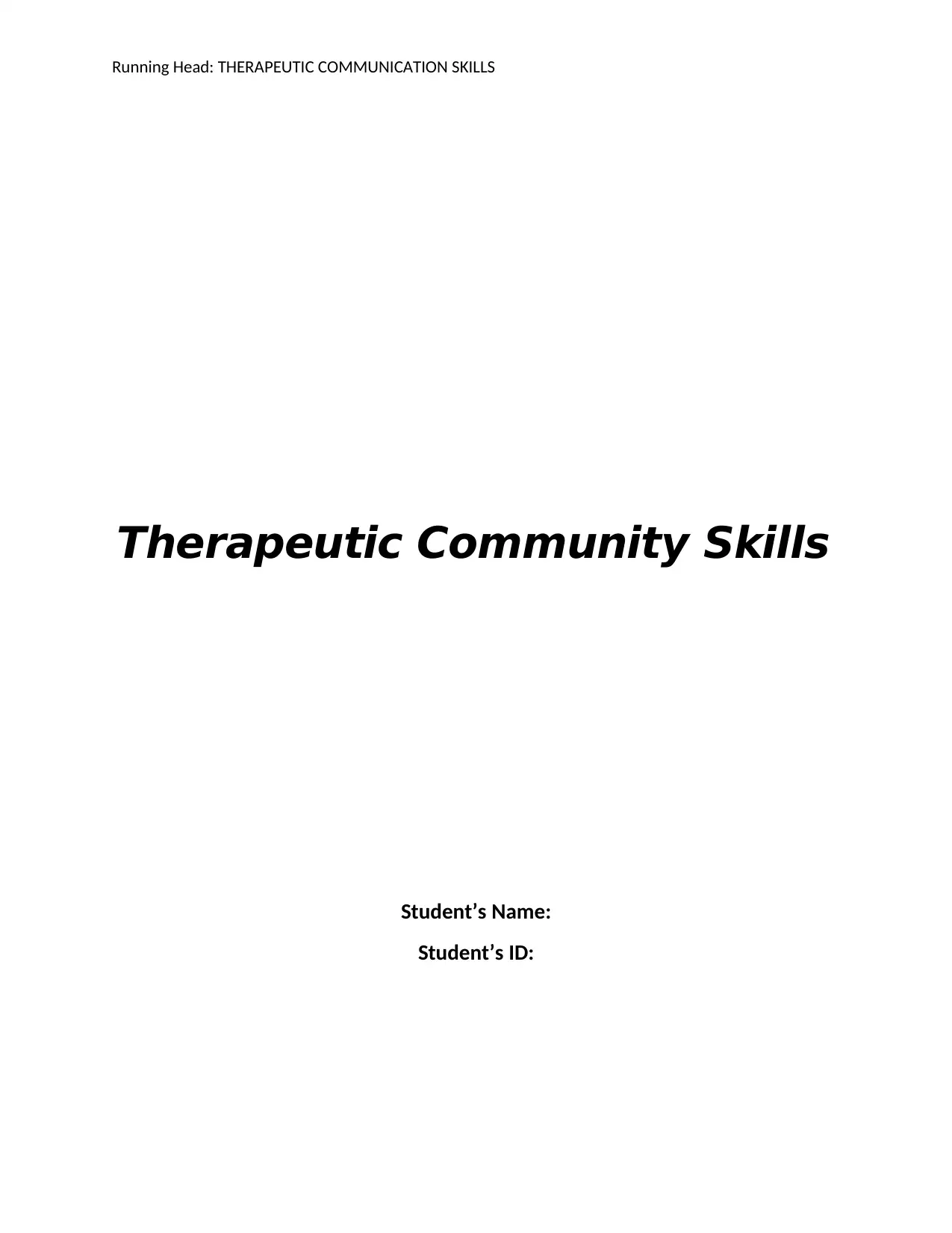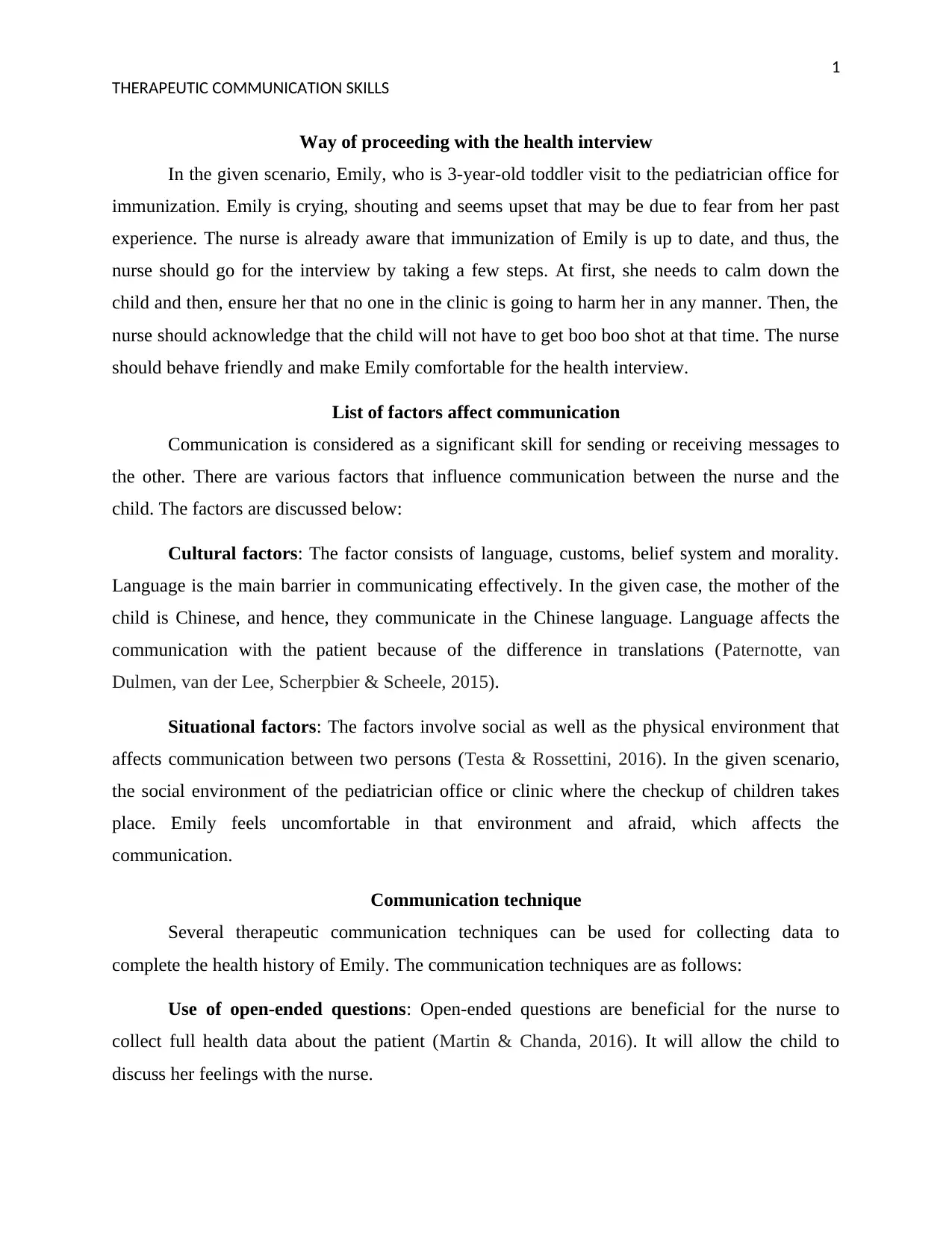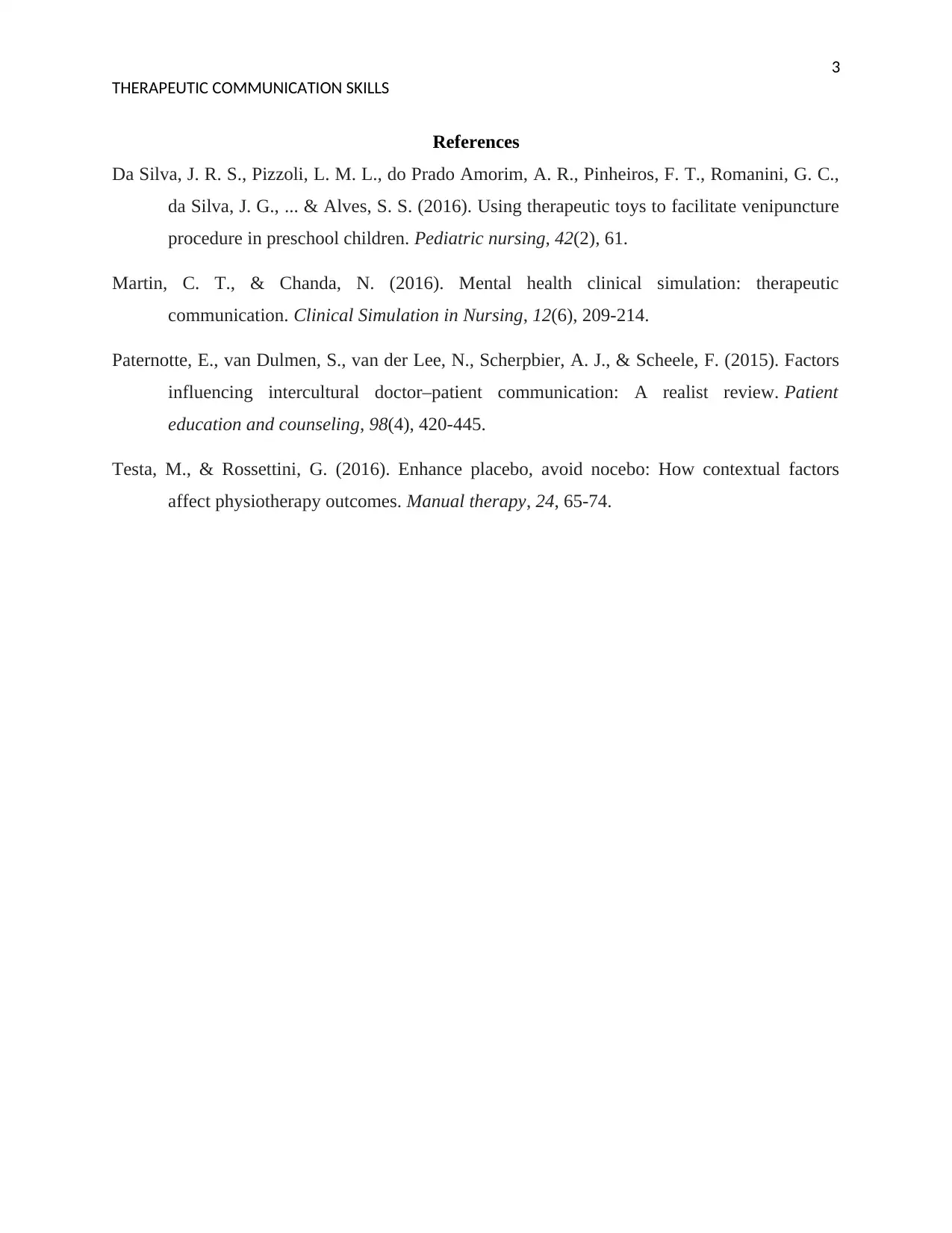Analysis of Therapeutic Communication Skills in Pediatric Nursing
VerifiedAdded on 2022/12/14
|4
|896
|448
Report
AI Summary
This report focuses on therapeutic communication skills within a pediatric healthcare context, specifically addressing a scenario where a 3-year-old child, Emily, is undergoing an immunization. It emphasizes the importance of the nurse's approach in calming the child and establishing a comfortable environment. The report outlines factors influencing communication, including cultural and situational aspects, and details various therapeutic communication techniques such as open-ended questions, active listening, and silence. It further describes the interview process, which involves establishing rapport, collecting information, and closing the session. The nurse's role in facilitating discussion, gathering health-related data, and recording information is highlighted. The report provides a comprehensive overview of effective communication strategies in pediatric nursing, supported by relevant references. The student report aims to provide nurses with a framework for improving communication and building trust with young patients.
1 out of 4











![[object Object]](/_next/static/media/star-bottom.7253800d.svg)